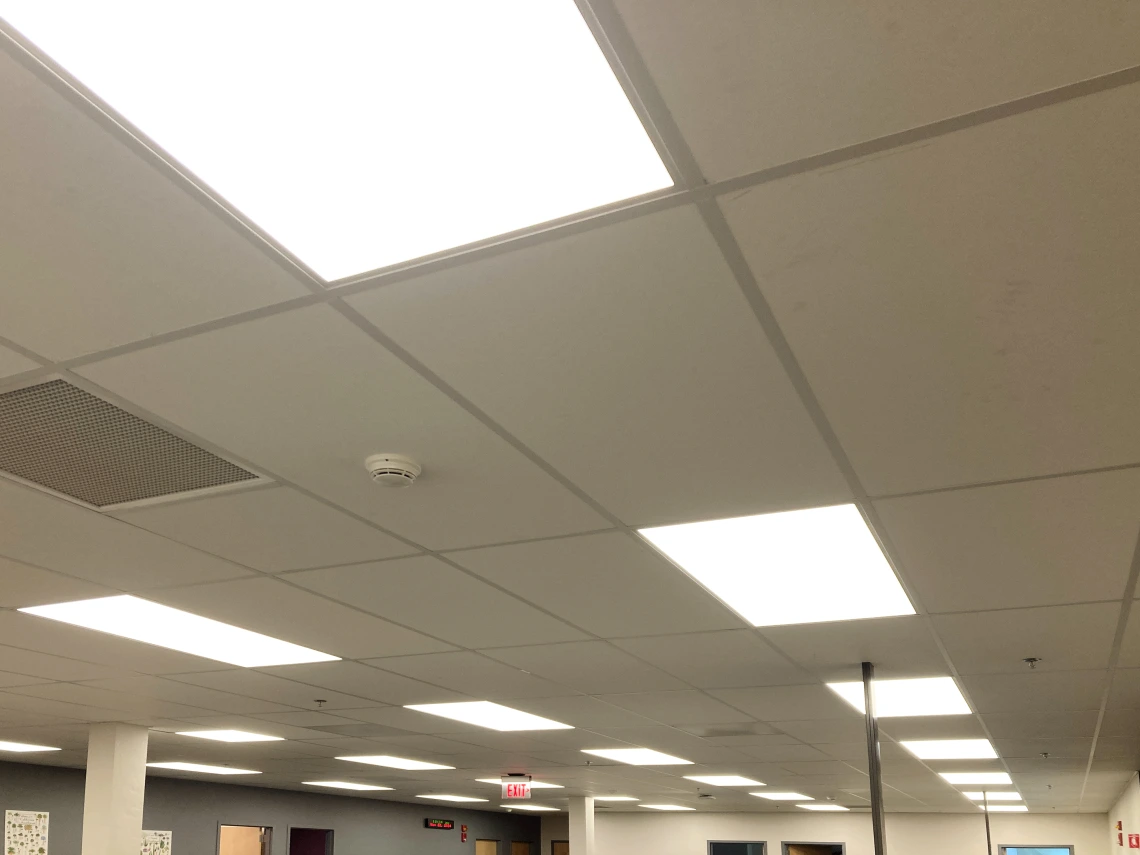
A significant portion of the campus electrical load powers lighting on campus, so any increase in lighting energy efficiency positively impacts the University’s energy consumption and costs. In the late 1980s and early 1990s, FM completed a comprehensive lighting upgrade throughout campus, replacing Incandescent lights with fluorescent lighting where possible. That conversion resulted in a 65-70% decrease in electrical energy consumption used for lighting. It also decreased the amount of heat produced by lighting by a factor of 60-65%, decreasing electricity required to cool university buildings.
Over the last decade, the advent of practical LED lighting has provided further opportunities for energy savings, as well as other sustainability advantages. Over that period, there has been a consistent effort to replace fluorescent lighting with LED lighting. The energy used by LEDs is about 50% of that used by fluorescent lights, and the heat produced by LED lights is about 11% of that produced by fluorescent lights of the same light output (and about 4% of the heat produced by equivalent incandescent lights).
LED lamps are more durable than either incandescent or fluorescent lights, which results in less damage during storage and handling. They also have much longer service lives, decreasing the labor needed to replace lights and thus produce much less waste volume. Fluorescent lamps contain mercury, which is the active element producing the light. Whenever a fluorescent lamp breaks, in use, handling, or during disposal, that mercury is released into the environment. LEDS have no mercury and pose far less environmental hazards during use and disposal than fluorescent lighting.
Part of the light production process in fluorescent lights produces a large amount of ultraviolet (UV) light, a portion of which may escape from the lamp. UV, over time can degrade some materials, fading paints and pigments in textiles and artwork, and embrittling some plastics.
LED lights are available in many standard and custom configurations and can be easily tailored to the required lighting quality. They are especially useful for lights that are hard to access, such as in stairwells or spaces with high ceilings, as they decrease the frequency of lamp replacements.
Considering these advantages, FM replaces incandescent or fluorescent lights with LED equivalents at every opportunity during renovations or other maintenance work. Besides the energy and labor savings realized, LED lighting retrofits reduce the amount of mercury present on campus and, therefore decrease opportunities for mercury release into the campus environment.

